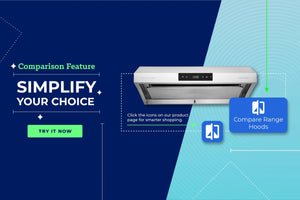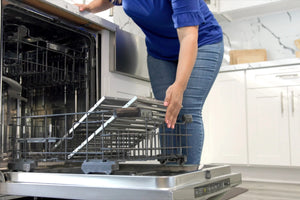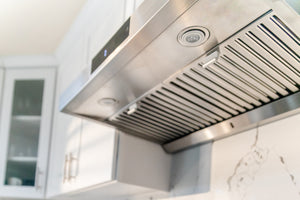Stainless Steel Pans Care Guide: How to Seamlessly Transition from Nonstick Pans
Making the switch from nonstick pans? Discover the benefits of stainless steel pans and learn how to care for them properly! Say goodbye to health risks and hello to delicious, safe cooking.
What We'll Cover


Why You Should Ditch Your Nonstick Pans
Nonstick pans are a popular cooking item thanks to their ease of use and convenience. However, there are some health risks associated with nonstick pans due to the coating used on the cooking surface of the pan. A chemical compound called polytetrafluoroethylene (PTFE), also known as Teflon, is used to coat nonstick pans. While the compound isn’t a health risk when pans are used properly, there are some precautions to keep in mind:
-
Overheating: The nonstick pans can release toxic fumes if they become overheated. If they reach temperatures above 500°F, they can release harmful chemicals into the air, which can cause flu-like symptoms.
-
Toxic chemical exposure: One of the biggest risks comes when nonstick pans get scratched or damaged in some way. When this happens, the pan can release PTFE or other chemicals. These chemicals have been associated with health issues in animals, including liver damage, developmental problems, and cancer.
To avoid these risks, always use low to medium heat settings when cooking with nonstick pans. Use wooden or silicone utensils to cook with instead of metal ones to avoid damage to the surface of the pans. Clean the pans with soft sponges and avoid the use of the dishwasher. Proper ventilation is also essential; always run your range hood during and after cooking to remove fumes quickly. Finally, consider using stainless steel pans instead.
Browse Kitchen Range Hoods
From Hauslane

How to Cook with Stainless Steel Pans
Stainless steel pans are simple-to-use and care for. No matter what type of home chef you are, you’ll find them to be essential items in your kitchen.
Before using them for the first time, heat some oil in the pan before first use. Doing so helps to create a non-stick surface and enhance the pan’s performance. You’ll also need to preheat the pan before you add ingredients to avoid food getting stuck to the surface. Preheating also helps to distribute the heat more evenly. You may find that you need to stir and toss the food more often than with nonstick pans to prevent ingredients from sticking and burning. As with nonstick pans, it’s a good idea to use non-abrasive utensils made of wood or silicone instead of metal to avoid damage.

How to Clean Stainless Steel Pans
When you’re ready to clean your stainless steel pans, allow them to cool slightly first. Running them under cold water can cause the pan to warp. Instead, soak the pan in warm soapy water to loosen any food particles. Always use a soft sponge to clean the pans and avoid scouring pads and abrasive cleaners. For more stubborn stains, make a paste using baking soda and water. Apply the paste to the affected area and let it sit for a while before scrubbing gently with a non-abrasive sponge or cloth. Rinse thoroughly afterward.

How to Store Stainless Steel Pans
When storing stainless steel pans, avoid stacking them directly on top of each other without any protection. Place a soft cloth or paper towel between the pans to prevent scratches.
By following these care instructions, you can maintain the appearance and functionality of your stainless steel pans for a long time. Remember that each manufacturer may have specific care recommendations, so it's always a good idea to consult the instructions provided with your particular pans.








